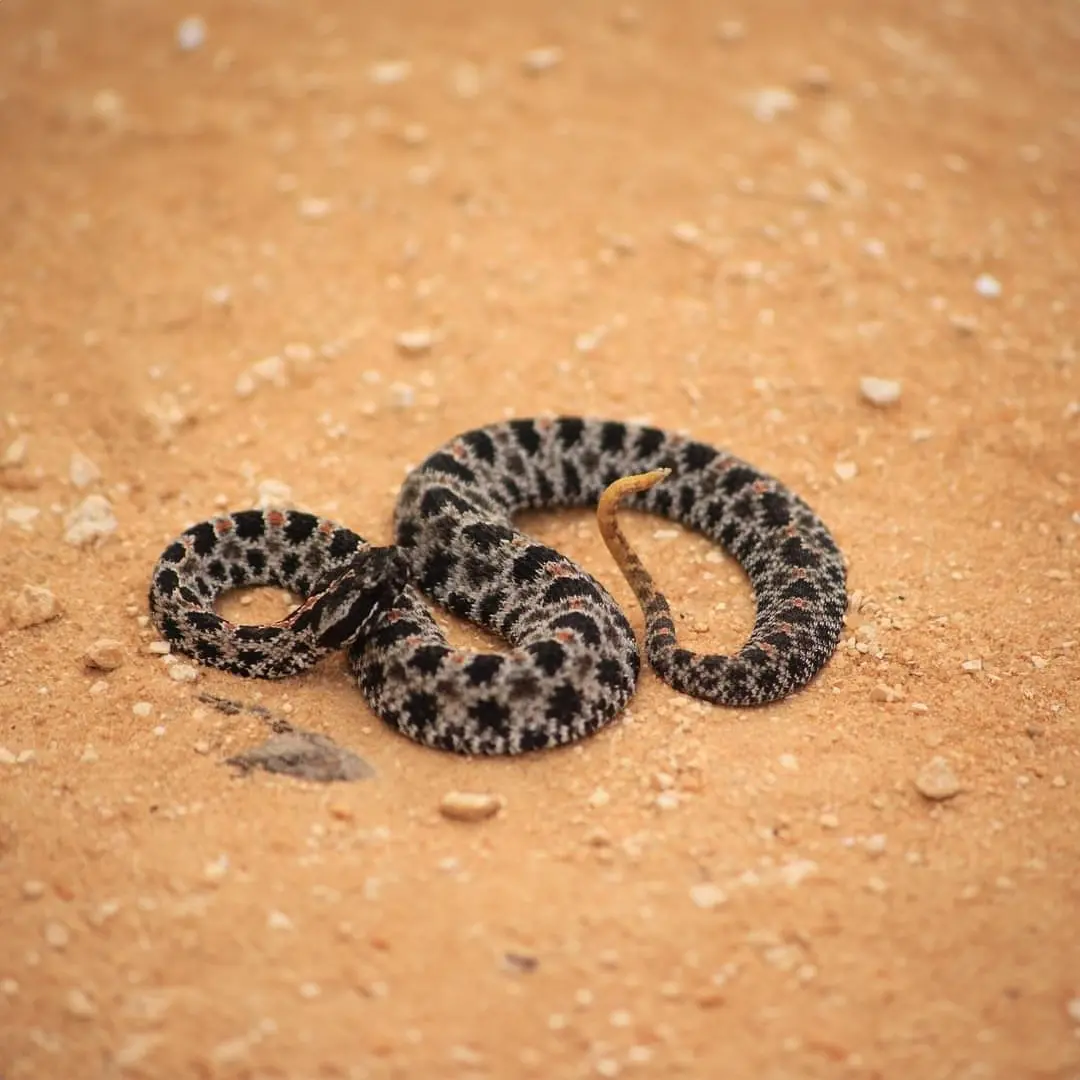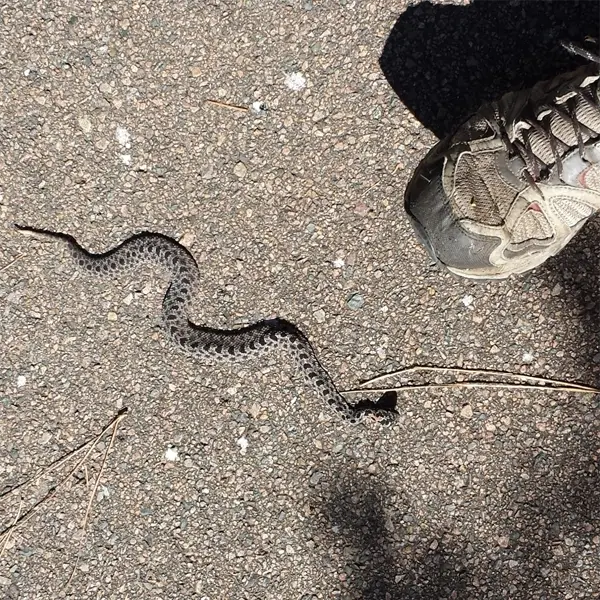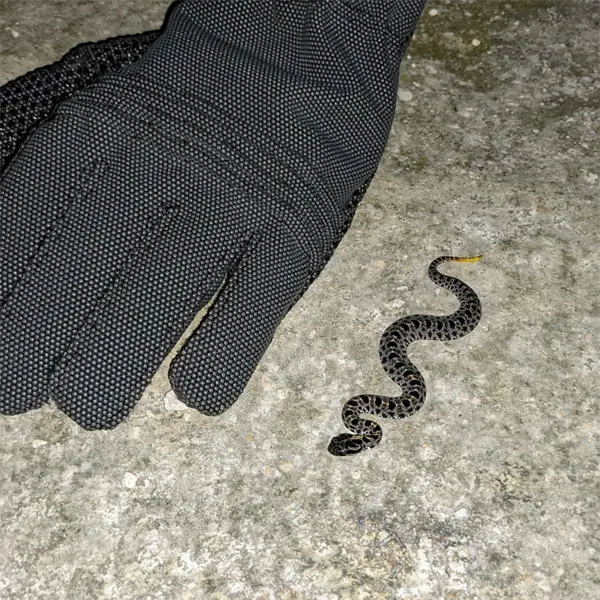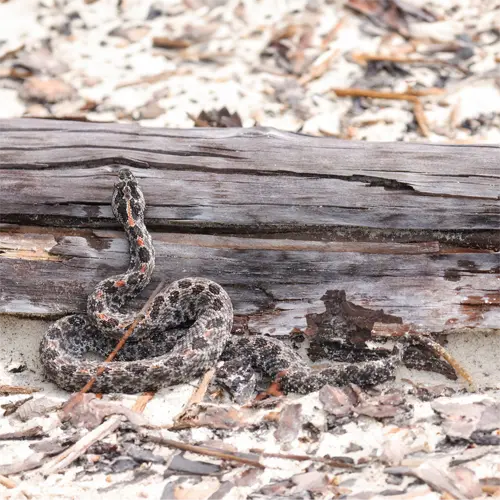Dusky Pygmy Rattlesnake
- Scientific Name
- Sistrurus miliarius ssp. barbouri
- Also Known As
- Dusky Pigmy Rattlesnake
- Range
- All of Florida
- Diet
- Small Rodents, Birds, Lizards, Amphibians
- Life Expectancy
- 10 Years
Quick Links
The Eastern Coral Snake in Central Florida
The dusky pygmy rattlesnake (Sistrurus miliarius ssp. barbouri) is a small venomous pitviper species found throughout central Florida. Often confused with the larger eastern diamondback rattlesnake (Crotalus adamanteus), the dusky pygmy can be identified by its distinct physical features, habits, and habitat.
This comprehensive guide provides key identification characteristics, biology facts, potential health risks, and prevention tips regarding dusky pygmy rattlesnakes in central Florida.
Appearance and Identification
The dusky pygmy rattlesnake can be distinguished from other rattlesnake species by the following physical features
The dusky pygmy rattlesnake can be differentiated from similar juvenile eastern diamondbacks by its smaller adult size, lack of diamond pattern, and white-centered dorsal blotches.
Maturation Rate
Young dusky pygmy rattlesnakes grow rapidly after birth. They shed their skins frequently as juveniles to accommodate fast growth.
Within their first year, dusky pygmies attain adult coloration and rattle formation. They can reproduce after their second winter dormancy period at age 2 to 3 years.
Habits and Behavior
Dusky pygmy rattlesnakes are primarily nocturnal and crepuscular, most active during the early morning or evening when temperatures are cooler. They prefer palmetto flatwoods, pine forests, scrublands, and sandy soils, often sheltering under leaf litter and low vegetation.
When threatened, dusky pygmies rapidly vibrate their tails to produce the distinctive rattling warning sound. However, the rattle is quieter than larger rattlesnake species. Dusky pygmies are somewhat sluggish but can still deliver a serious envenomation if provoked.
Reproduction and Lifespan
Breeding occurs in the spring after emergence from winter dormancy. Females produce litters of 3 to 14 young in late summer after a gestation of 3 to 5 months. Young stay with the mother for 1 to 2 weeks before dispersing.
Dusky pygmy rattlesnakes reach reproductive maturity within 2 to 3 years. Their average lifespan in the wild is 10 years.
Ideal Habitat and Range
The subtropical climate of central Florida provides ideal habitat for dusky pygmy rattlesnakes due to the region’s relatively warm temperatures year-round and seasonal rains that support dense ground vegetation.
Average annual temperatures range from the mid-60s°F (18°C) in the north to the low 70s°F (22°C) in southern areas. Summer brings highs in the 90s°F (32-35°C). Central Florida receives over 50 inches (127 cm) of rainfall yearly, with frequent summer thunderstorms.
These warmer and wetter conditions allow saw palmettos, scrub oaks, pine flatwoods and sandhill ecosystems to flourish, creating optimum dusky pygmy rattlesnake environs. Rural areas adjacent to human development offer suitable habitat that can lead to dangerous snake encounters if preventive measures aren’t taken.
Diet and Feeding
Dusky pygmy rattlesnakes primarily prey upon small rodents, birds, lizards, amphibians and large insects. Using heat-sensitive facial pits to detect warm-blooded prey at night, the snakes inject venom to immobilize victims before consuming them whole.
Common prey includes:
- House mice (Mus musculus)
- Cotton mice (Peromyscus gossypinus)
- Ground skinks (Scincella lateralis)
- Green anoles (Anolis carolinensis)
- Lubber grasshoppers (Romalea microptera)
They may also opportunistically eat smaller snakes. Dusky pygmies require more frequent feeding than larger rattlesnake species. They may eat their own body weight in a single meal.
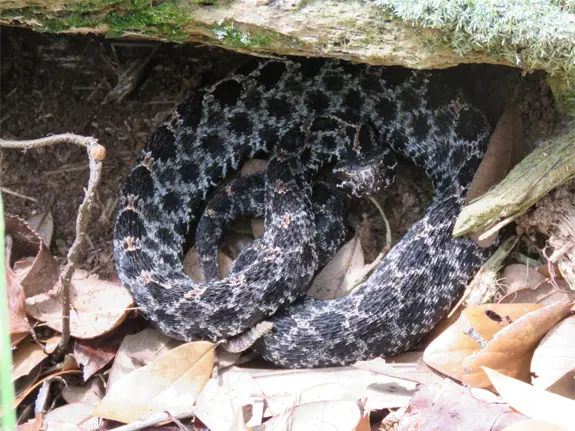
Photo 201331845 © Anthony, CC BY-NC

Common Health Risks
Though not often aggressive, dusky pygmy rattlesnakes can inflict serious or even fatal snakebites in self-defense if threatened or accidentally stepped on due to their highly potent venom.
Dusky pygmy venom contains destructive proteolytic enzymes, hemotoxins and neurotoxins. Envenomation can cause:
- Severe burning pain at the bite site
- Nausea and vomiting
- Tissue damage, swelling and bruising
- Impaired vision and drooping eyelids
- Excessive bleeding and shock
- Rapid pulse, sweating and fainting
- Muscle weakness or temporary paralysis
Bites require rapid medical treatment to prevent severe sequelae. Around 7,000 venomous snakebites occur in the U.S. annually but fewer than 5 are fatal with proper care.
Preventing Dusky Pygmy Rattlesnake Encounters
The risk of bites can be reduced by exercising caution outdoors, avoiding handling snakes, and snake-proofing areas around homes:
- Wear closed toe shoes and long pants when in snake environs.
- Avoid placing hands/feet where you can’t see clearly when in snake habitat.
- Leave snakes alone if encountered. Do not try to kill or harass them. Back away slowly.
- Trim overgrown vegetation and brush piles around property.
- Seal crawl space and basement entries.
- Use snake-proof fencing and screens on enclosures.
- Consult a professional for removal if snakes take up residence on property.
Photo 236741608 © arakso, CC BY-NC
Dusky Pygmy Rattlesnakes in Central Florida – Conclusion
In summary, the venomous dusky pygmy rattlesnake occupies central Florida palmetto scrub, pine flatwoods and nearby rural/suburban areas. Its small size makes accidental encounters more likely. This cryptic pitviper is best identified by its rattle, dark facial stripes, white dorsal blotches and small adult length. Preventive vigilance, avoidance of the snakes, and exclusion can reduce risks.
Prompt medical care is key for the potentially dangerous envenomation. Through informed awareness and proaction, central Florida residents can co-exist safely with the native dusky pygmy rattler.

